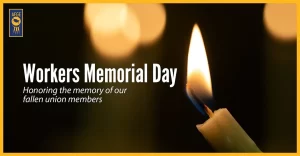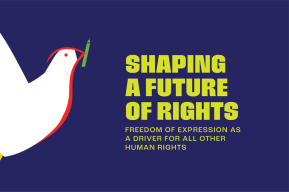 International Drone Day is celebrated on the first Saturday of May every year. This year, it falls on May 6. This holiday raises awareness of drones and their various applications in the civilian sector, from search and rescue operations to package delivery and dropping off medical supplies. Two British drone operators, Sarah and David John O’Neal came up with the idea for this holiday in 2014. Their goal is to highlight the positive and helpful aspects of drones. This combats the skepticism and paranoia that many people around the world have about them. Thousands have celebrated this holiday every year since then.
International Drone Day is celebrated on the first Saturday of May every year. This year, it falls on May 6. This holiday raises awareness of drones and their various applications in the civilian sector, from search and rescue operations to package delivery and dropping off medical supplies. Two British drone operators, Sarah and David John O’Neal came up with the idea for this holiday in 2014. Their goal is to highlight the positive and helpful aspects of drones. This combats the skepticism and paranoia that many people around the world have about them. Thousands have celebrated this holiday every year since then.
5th Sunday of Easter, Year A – 2023



 Someone may have chosen to live in a luxury apartment.
Someone may have chosen to live in a luxury apartment.
Another person has found the ideal family house.
Yet another has bought a summer residence.
A friendly shack is reserved for sport activities for still another.
All these locations serve as some kind of residence where rooms are available.
Yet often the people who own, or rent, these places do not seem to enjoy fully the time they spend there.
Is it not true that may of us experience some kind of restlessness wherever we may find ourselves?
We had thought we would be fully happy at the cottage, or condo, we have acquired, but…
Somehow it seems that something is missing.
This is possibly the result of… being human!
Full happiness, total satisfaction, seem to elude us.
Most times we experience some kind of unease…
We long for something else, for more…
In today’s gospel, Jesus tells his friends that he is going to prepare a place for them (John 14:1-12).
They are unaware of what he means and they ask themselves where he is going.
Our own reaction may be quite similar whenever we think of what lies ahead…
Ahead at the end of our lives here on earth…
Because there are moments when we think of this… trying to imagine what is awaiting us.
In simple words, we could say that what is waiting for us, what Jesus has prepared for us, is our real HOME.
A place of complete happiness, where pain, anxiety, misfortune, have disappeared.
Satisfaction and serenity will be ours for ever.
Perhaps we could add that a foretaste of this is already offered to us if…
If we make God ‘at home’ with us.
Jesus has said:
“If anyone loves me, he will keep my word,
And my Father will love him,
And we shall come to him
And make our home with him.” (John 14:23)
It is as simple as this… if…
Note: Another text is available on a different theme, in French at: https://image-i-nations.com/5e-dimanche-de-paques-annee-a-2023
Source: Images: pexels.com (Pixabay, Kelly, Jack Redgate, Bianca)
World Press Freedom Day – 3 May 2023
Shaping a Future of Rights: Freedom of expression as a driver for all other human rights
2023 year marks the 30th anniversary of World Press Freedom Day. Three decades have passed since it was proclaimed in 1993, in which we have seen substantial progress towards achieving a free press and freedom of expression around the world. The proliferation of independent media in many countries and the rise of digital technologies have enabled the free flow of information. However, media freedom, safety of journalists and freedom of expression are increasingly under attack, which impacts the fulfillment of other human rights.
The international community faces multiple crises: conflicts and violence, persistent socio-economic inequalities driving migration, environmental crises and challenges to the health and wellbeing of people all around the world. At the same time, disinformation and misinformation online and offline proliferate, with serious impact on the institutions underpinning democracy, the rule of law and human rights.
It is exactly to counter these critical situations and threats, that press freedom, safety of journalists and access to information take centre stage. The right to freedom of expression, enshrined in Article 19 of the Universal Declaration of Human Rights, is a prerequisite and a driver to the enjoyment of all other human rights. This year’s Special 30th anniversary celebration of World Press Freedom Day is, therefore, a call to recentre press freedom, as well as independent, pluralistic and diverse media, as key to the enjoyment of all other human rights.
Source: Text: https://www.un.org/en/observances/press-freedom-day Image: Unesco.org
International Jazz Day – 30 April
 International Jazz Day highlights the ability for jazz to unite people from all walks of life and draw together folks from around the globe. No one is left out, as this day brings together artists, schools, communities, historians, academics, and jazz aficionados to raise awareness around this type of music and educate the public about the roots, impact, and future of jazz. There’s a deep-rooted message attached to this day of celebration, such as reinforcing international cooperation and communication.
International Jazz Day highlights the ability for jazz to unite people from all walks of life and draw together folks from around the globe. No one is left out, as this day brings together artists, schools, communities, historians, academics, and jazz aficionados to raise awareness around this type of music and educate the public about the roots, impact, and future of jazz. There’s a deep-rooted message attached to this day of celebration, such as reinforcing international cooperation and communication.
It brings to light the need for intercultural dialogue and mutual understanding through one of the best ways possible, music. The power of the music will be apparent when participants view people of all backgrounds, forgetting about their differences and joining together to celebrate jazz. Any adverse circumstances from the past or present are suddenly forgotten or pushed aside, and people begin to focus on friendship, freedom, hope, and dignity instead.
The day itself is intended to promote peace, diversity, respect among different cultures, and highlight the need for human rights and dignity. The music itself addresses the desire for eliminating discrimination and promoting the freedom of expression. Youth are also encouraged to participate by enacting change and helping to foster gender equality. One will have the chance to experience how much life and love emerges when the day kicks off, and musicians from all over begin to jam and play their music.
History of International Jazz Day
It all began in 2011 when the United Nations Educational, Scientific, and Cultural Organization declared International Jazz Day as an opportunity to give recognition to jazz music and state its role to unite people all around the globe. It’s been going strong ever since and people look forward to this day each year when music lovers from around the world can share in the experience of listening to and making jazz music.
The idea itself emerged from jazz pianist and UNESCO Goodwill Ambassador Herbie Hancock. Together, the UNESCO Director-General and Hancock chair the event and ensure people from all over come out to participate in the celebration each year. Cities such as Paris, New Orleans, and New York were some of the first to begin to educate the public on the event and draw excitement to Jazz Day.
The Host City goes as far as to organize an All-Star Global Concert which brings together over two-dozen jazz musicians from all parts of the world in or around a historical landmark. It’s interesting to know that the popularity of the day has grown immensely over the years. Now, nearly 200 countries participate in International Jazz Day.
You can visit just about any location and hear and experience jazz music at its finest. You’ll witness artists and onlookers expressing themselves in their own unique and individual way. Cape Town, South Africa is the Host City for 2020, so one should make a note of this if he or she wants to travel and see some of the best musicians perform their music live. Not only will there be music present at the event, but organizers are also planning an extensive educational and community outreach program for people to participate in and as a way for them to expand their knowledge.
Source: Text (Abridged): https://www.daysoftheyear.com/days/jazz-day Image: Freepik
International Dance Day – 29 April
The art of dance is one of the earliest and longest-standing forms of entertainment and community activity known to humankind.
Dance is one of the ultimate activities to destress, lose inhibitions, meet new people, and boost physical health. The annual tradition encapsulates people around the globe, from professional dancers to individuals that would usually stand well back.
History of Dance Day
The art of dance can be traced back at least 9,000 years to ancient Indian paintings, while ceremonial dances appeared in many other ancient cultures. It has been a central ingredient in human life ever since with everyone from tribespeople to professional entertainers showcasing their talents. The great thing is that it can be enjoyed by everybody regardless of their natural rhythm or dance capabilities. Dance Day aims to celebrate a world of dance.
 In addition to encouraging dance from participants of all ability levels, Dance Day is a true global celebration that breaks down barriers to bring people together. Every dance is welcomed with open arms from traditional ceremonial dances like the Haka, Rejang dance, and Kagura to modern street dance and jumpstyle electronic dance. It includes dances that are steeped in heritage as well as contemporary styles that borrow attributes from various sources.
In addition to encouraging dance from participants of all ability levels, Dance Day is a true global celebration that breaks down barriers to bring people together. Every dance is welcomed with open arms from traditional ceremonial dances like the Haka, Rejang dance, and Kagura to modern street dance and jumpstyle electronic dance. It includes dances that are steeped in heritage as well as contemporary styles that borrow attributes from various sources.
Kizomba, jazz dance, American rhythm, Latin, ballet, and country dances can be enjoyed on the day by solo dancers, duets, small groups, or huge collectives. Dance Day celebrates the free and unrestricted nature of dance, as well as the concepts of working together and celebrating cultural differences while also realizing that we are all united.
History of Dance Day
While the history of dance goes back thousands of years, the official Dance Day ceremonies only launched in 1982. With Flashdance hitting the silver screens the following year, the event could not have started at a better time. After all, millions around the globe suddenly discovered their heightened love of the art shortly after leaving the cinemas.
Ever since its original event, the annual celebration is for amateurs and professionals, encouraging participants to enjoy their favorite styles and routines while simultaneously broadening their knowledge by embracing other dances and cultures. There’s a chance to be stunned by the quality of other dancers while also enjoying the lighthearted novelty dances and comedy routines. For most, the inevitable mistakes that occur when trying to learn new dances are a source of laughs while still being a great way to develop new talents.
Dance Day itself is organized by Dance Committee of the International Theatre Institute (ITI), who are partnered to UNESCO. This underlines the status of the celebrations. The annual events occur on the birthday of Jean-Georges Noverre (the creator of modern ballet).
Source: Text (abridged): https://www.daysoftheyear.com/days/dance-day/ Image: National Day Calendar 2023
4th Sunday of Easter, Year A – 2023
The voice of someone is something unique, characteristic of a given individual.
It is perceived as such by the people who hear it.
When Jesus told Peter that, if he could not wash his feet, Peter had no part with him, he could not fail to recognize the tone of the Master’s voice (John 13:8).
John being told to take Mary as his mother, recognized the accent of these words spoken by Jesus on the cross (John 19:27).
Mary Magdalen, near the tomb where Jesus was buried, recognized his voice when he called her: ‘Mary!’ (John 20:16).
 The gospel of this Sunday speaks of the Good Shepherd and tells us (John 10:1-10):
The gospel of this Sunday speaks of the Good Shepherd and tells us (John 10:1-10):
“The sheep listen to his voice.
He calls his own sheep by name…
His sheep follow him because they know his voice.”
The two-fold question arises reaching each one of us:
Do we hear Jesus’ voice, and… do we recognize it?…
The spontaneous reaction of many of us will be:
Jesus can no longer be heard now… he is… in heaven…
If asked to explain where ‘heaven’ is… we may feel a little embarrassed.
Some may point up above, showing, uncomfortably, the clouds…
It is obvious that we should NOT expect to hear a definite sound of so many decibels addressed to us in a given pitch.
But this is no indication that Jesus – the Risen Lord – does not speak to us.
Jesus’ personal message to each one of us will be expressed, not in sound, but no less truly, in different ways.
-
- It may come as the interpretation we make of a remark addressed to us.
- It may be perceived as an inspiration from a thought crossing our mind.
- It may surge gradually from the memory of an event from the past.
- It may be softly whispered in an intuition received suddenly.
- It may be expressed in a genuine impulse to do good.
- It may be understood in a subtle inclination to be more generous.
Of course, we must make sure that the voice we hear is really that of Christ.
The apostle John wrote to the first Christians:
“It is not every spirit that you can trust;
test them, to see if they come from God.” (1 John 4:1)
Then, having recognized his voice, we accept the invitation of the Risen Lord to follow him…
Wherever he may take us, in good times and in bad, assured that he is with us.
Another text is available on a different theme, in French at: https://image-i-nations.com/4e-dimanche-de-paques-annee-a-2023/
Source: Image: https://www.churchofjesuschrist.org/
World Day for Safety and Health at Work – 28 April 2023
 A safe and healthy working environment is a fundamental principle and right at work
A safe and healthy working environment is a fundamental principle and right at work
In June 2022, the International Labour Conference (ILC) decided to include “a safe and healthy working environment” in the ILO’s framework of fundamental principles and rights at work.
On 28 April 2023, the ILO celebrates this decision, bringing together experts and constituents to discuss the implications it has for the world of work, as well as how to practically implement this right in the world of work.
Background
In 2003, the International Labour Organization (ILO), began to observe World Day in order to stress the prevention of accidents and diseases at work, capitalizing on the ILO’s traditional strengths of tripartism and social dialogue.
This celebration is an integral part of the Global Strategy on Occupational Safety and Health of the ILO, as documented in the Conclusions of the International Labour Conference in June 2003. One of the main pillars of the Global Strategy is advocacy, the World Day for Safety and Health at Work is a significant tool to raise awareness of how to make work safe and healthy and of the need to raise the political profile of occupational safety and health.
28 April is also the International Commemoration Day for Dead and Injured Workers organized worldwide by the trade union  movement since 1996.
movement since 1996.
Prevention of occupational accidents and diseases
The annual World Day for Safety and Health at Work on 28 April promotes the prevention of occupational accidents and diseases globally. It is an awareness-raising campaign intended to focus international attention on the magnitude of the problem and on how promoting and creating a safety and health culture can help reduce the number of work-related deaths and injuries.
Each of us is responsible for stopping deaths and injuries on the job. As governments we are responsible for providing the infrastructure — laws and services — necessary to ensure that workers remain employable and that enterprises flourish; this includes the development of a national policy and programme and a system of inspection to enforce compliance with occupational safety and health legislation and policy. As employers we are responsible for ensuring that the working environment is safe and healthy. As workers we are responsible to work safely and to protect ourselves and not to endanger others, to know our rights and to participate in the implementation of preventive measures.
Source: Text & Image: https://www.un.org/en/observances/work-safety-day 2nd Image: www.afge.org
World Tapir Day- 27 April
 There’s an odd little creature that’s a native of Central and South America, and can even be found in SE Asia. What kind of odd critter? Well, it looks a bit like a pig, with it’s general build and toes with hooves, but it also looks a bit, just a little, like an elephant with its long snout! What are we talking about? The Tapir! This wonderful animal is currently on the watch-list as it has been over-hunted for its meat and hides. World Tapir Day raises awareness about these endangered animals and helps to protect them for future generations.
There’s an odd little creature that’s a native of Central and South America, and can even be found in SE Asia. What kind of odd critter? Well, it looks a bit like a pig, with it’s general build and toes with hooves, but it also looks a bit, just a little, like an elephant with its long snout! What are we talking about? The Tapir! This wonderful animal is currently on the watch-list as it has been over-hunted for its meat and hides. World Tapir Day raises awareness about these endangered animals and helps to protect them for future generations.
History of World Tapir Day
World Tapir Day was established with the intent of protecting all the members of this endangered species from extinction, that they might still be here for our children. The areas they inhabit are either forest or jungle, which makes them particularly vulnerable to deforestation, especially as large herbivores. But the dangers of their extinction goes even further than just the loss of another unique species, the loss of the Tapir could in fact endanger the entire remaining forests. As part of their natural habits, they also serve to disperse seeds throughout the jungle, and are one of the oldest species found in these areas.
Many people are unaware of the Tapir as a species, meaning they are losing a special part of the world without ever knowing they exist. So unknown are these animals that those who visit Zoos that frequently mistake them for members of another species. This is even a problem in those areas where they live natively, so World Tapir Day was established to help raise world awareness of this species.
Source: Text: //www.daysoftheyear.com/days/world-tapir-day/ Image: https://nationaldaycalendar.com/world-tapir-day-april-27/
World Intellectual Property Day – 26 April
 World Intellectual Property Day is observed annually on April 26. The event was established by the World Intellectual Property Organization (WIPO) in 2000 to « raise awareness of how patents, copyright, trademarks and designs impact on daily life » and « to celebrate creativity, and the contribution made by creators and innovators to the development of economies and societies across the globe ».
World Intellectual Property Day is observed annually on April 26. The event was established by the World Intellectual Property Organization (WIPO) in 2000 to « raise awareness of how patents, copyright, trademarks and designs impact on daily life » and « to celebrate creativity, and the contribution made by creators and innovators to the development of economies and societies across the globe ».
April 26 was chosen as the date for World Intellectual Property Day because it coincides with the date on which the Convention Establishing the World Intellectual Property Organization entered into force in 1970.
World Intellectual Property Day events are an opportunity to explore different aspects of the intellectual property system and how innovators, creators and businesses can use it to add value to their ingenuity and creativity. It is also an opportunity shine a light on the IP system’s role in supporting economic, social and cultural development for the benefit of everyone, everywhere.
At its core, the IP system seeks to balance the interests of inventors and creators with those of the general public through the grant of time-limited rights that meet pre-established conditions as set out in international treaties negotiated by WIPO’s member states.
Source: Text: https://en.wikipedia.org/wiki/World_Intellectual_Property_Day Image: https://www.diffordsguide.com/on-this-day/april/26
World Malaria Day – 25 April 2023
 World Malaria Day 2023 will be marked under the theme “Time to deliver zero malaria: invest, innovate, implement”. Within this theme, WHO will focus on the third “i” – implement – and notably the critical importance of reaching marginalized populations with the tools and strategies that are available today.
World Malaria Day 2023 will be marked under the theme “Time to deliver zero malaria: invest, innovate, implement”. Within this theme, WHO will focus on the third “i” – implement – and notably the critical importance of reaching marginalized populations with the tools and strategies that are available today.
In 2021, there have been 619 malaria deaths.
According to the latest World malaria report, countries have made some progress in expanding access to malaria services for most-at-risk populations. However, too many people at high risk of malaria are still missing out on the services they need to prevent, detect and treat the disease.
Challenges in expanding access to malaria services have been compounded, particularly in sub-Saharan Africa, by the ongoing COVID-19 pandemic, converging humanitarian crises, restricted funding, weak surveillance systems, and declines in the effectiveness of core malaria-fighting tools.
A number of malaria vaccines are currently in development. Like the RTS,S vaccine, many of them target the malaria parasite before it enters the human liver where it can quickly multiply. The most advanced of these candidates is R21, which recently completed Phase 3 clinical trials. Other vaccine candidates seek to stop transmission of the malaria parasite, and still others to protect women during pregnancy.

